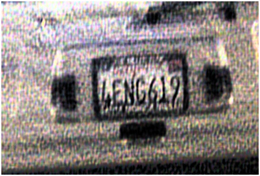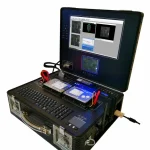In an age where data is dispersed across devices, networks and cloud platforms, the fields of cloud forensics and digital forensic analysis are becoming increasingly interdependent. Whether it’s video evidence stored on remote servers, image files in shared drives, or metadata hidden in cloud logs, investigators must understand how to traverse both worlds. This article explores how the convergence of cloud forensics with digital forensic analysis is reshaping investigations, with a lens on how companies like Cognitech, Inc. deliver the tools to make it happen.
What is Cloud Forensics?
Cloud forensics refers to the application of investigative and analytical techniques to data stored or processed in cloud environments. Traditional digital forensics often focused on physical media (hard drives, sealed devices, etc.). With cloud computing, investigators face new challenges and opportunities:
- The data may be stored across many geographically-distributed servers, under the control of third-party providers.
- There’s often a virtualized infrastructure, with shared resources and multi-tenant contexts.
- Investigators must work in environments where the original “hardware” may not be accessible in a conventional sense, and they must rely on snapshots, logs, and provider cooperation.
- Chain of custody, evidence integrity, and jurisdiction can be more complex.
Because of these factors, cloud forensics demands specialised processes to collect, preserve, analyse and report on data in a way that remains court-admissible. It invites new layers of collaboration between forensic experts, cloud service providers, legal counsel and IT operations.
What is Digital Forensic Analysis?
Digital forensic analysis is the process of examining digital media — such as video, images, logs, devices, network traffic — to uncover evidence and support investigations. As defined in the realm of digital forensics: the process involves acquisition/imaging, analysis, and reporting.
Examples of digital forensic analysis include:
- Enhancing a blurry license-plate image from CCTV footage.
- Verifying whether an image has been tampered with.
- Correlating time stamps in video with other sources to reconstruct how an event unfolded.
When digital forensic analysis is carried out effectively, it becomes a bridge between raw data and legal or investigative conclusions.
Why the Intersection Matters: Cloud + Digital Forensics
When cloud storage or cloud-based applications enter the picture, the lines between cloud forensics and digital forensic analysis blur — and that’s where powerful capabilities emerge.
1. Volume & Accessibility of Data
Cloud platforms often hold vast volumes of evidence: images, video, logs, system snapshots, and archived communications. With cloud forensics, investigators can access that data via secure remote methods rather than physically seizing hardware. Combining this with digital forensic analysis means they can process, enhance and interpret the data more rapidly and from anywhere.
2. Advanced Enhancement & Authentication
Take the example of a firm like Cognitech: they provide both cloud-based platforms (such as their “My Cognitech Cloud (MC2)” service) and specialised digital forensic analysis tools (such as their “Video Investigator 64”).
For instance:
- On the cloud side: investigators can upload video/image files securely, process them remotely, and download results.
- On the analysis side: tools offer de-blurring, denoising, frame-fusion, 3D photogrammetry and authentication of digital media.
Because of this integration, investigators in the cloud can not only retrieve data but also immediately apply forensic-grade analysis, creating a streamlined workflow.
3. Location-independence and Scalability
Cloud environments allow forensic teams to work remotely, collaborate globally, and scale resources according to investigation needs. This is especially valuable when digital forensic analysis requires high compute – for example, processing large 4K/8K CCTV files, fusing multiple camera views, or conducting 3D model merges. Cognitech’s tools support this via their cloud platform and modules for large media files.
This means investigations can proceed more efficiently, with fewer bottlenecks.
4. Chain of Custody & Evidence Integrity
Even in cloud-based workflows, maintaining evidence integrity is critical. Digital forensic analysis tools must log processing steps, maintain file hash records, and produce court-ready reports. Cognitech’s suite emphasises hash-key generation and authentication modules (for images/videos) for precisely this reason.
On the cloud side, secure upload, controlled access, and no residual data left on servers (after download) are also important protections.
Hence, the intersection of cloud forensics and digital forensic analysis doesn’t compromise on forensic rigor — it enhances it through accessibility plus robust processing.

Practical Workflow: From Cloud Data to Forensic Insight
Let’s walk through a simplified workflow to illustrate how cloud forensics and digital forensic analysis collaborate:
Step 1: Evidence Acquisition
- A surveillance video stored in a cloud-based DVR or remote storage is identified.
- Via cloud forensics, the investigator securely downloads or streams the file from the cloud, capturing metadata, preserving hashes, and securing the chain of custody.
- Alternatively, the file may be processed directly in the cloud environment, eliminating the need to download large files.
Step 2: Upload & Secure Processing
- The video is transferred to a secure cloud workstation (e.g., My Cognitech Cloud) or a secure local environment configured for forensic analysis.
- Access controls ensure only authorised users can handle the file; logs track every action.
Step 3: Digital Forensic Analysis
- Using tools like Video Investigator 64, the forensic analyst applies filters: de-blur, de-noise, frame fusion, enhance lighting, correct lens distortion.
- The analyst may isolate specific frames, zoom in on faces or license plates, apply photogrammetry or 3-D model fusion if multiple camera views exist.
- Authentication modules examine whether the image or video has been tampered with: detecting inconsistencies or edits.
Step 4: Reporting & Legal Preparation
- The processed output (enhanced images/video) is exported, preserving a record of every processing step.
- A forensic report is compiled: methods used, findings, chain of evidence, file hashes.
- This report is suitable for court submission or investigative review.
Step 5: Collaboration & Remote Review
- Because the workflow leveraged cloud platforms, team members (investigators, legal counsel, experts) perhaps in different locations, can view images/videos securely, annotate them, and share findings.
- The entire process is documented, secured and scalable.
Key Benefits of the Converged Approach
Bringing together cloud forensics and digital forensic analysis offers a number of distinct benefits:
- Speed: Cloud access + powerful analysis tools reduce the time from data retrieval to actionable evidence.
- Flexibility: Remote access allows investigations to proceed regardless of location.
- Scalability: Large volumes of data and complex formats (4K video, multiple cameras, 360º scans) can be handled.
- Accuracy: Forensic-grade tools (de-blur, frame-fusion, 3D modelling) boost the clarity of evidence.
- Security & Integrity: Cloud workflows, when properly configured, maintain evidence chain, protect data, and allow repeatable processing.
- Collaboration: Distributed teams can work synchronously, review results and communicate findings securely.
Considerations & Challenges
While the combined model is powerful, there are important considerations:
- Cloud Provider Cooperation: Accessing forensic-relevant logs, metadata or original files may require collaboration with the cloud service provider(s).
- Jurisdiction & Compliance: Data stored in the cloud may cross international borders; investigators must account for data-protection laws and legal jurisdiction.
- Data Volume & Bandwidth: Uploading/downloading very large video or 3D-scan files can strain bandwidth; cloud streaming solutions help mitigate this.
- Training & Expertise: Using advanced forensic analysis tools effectively requires skilled analysts and continuously updated workflows.
- Chain of Custody in Virtual Environments: While cloud platforms offer convenience, maintaining forensic admissibility means strict logging, hashing and validation of any processed file.
- Security of Cloud Environments: Ensuring the cloud infrastructure itself is secure, access-controlled, and that the processing doesn’t introduce vulnerabilities.
Why Companies Like Cognitech Are at the Forefront
Cognitech encapsulates the convergence of cloud forensics and digital forensic analysis in several significant ways:
- They offer My Cognitech Cloud (MC2), a streaming cloud service for forensic video investigation, enabling remote access to powerful tools.
- They also provide sophisticated software such as Video Investigator 64, TriSuite 64, AutoMeasure and VideoActive — tools built specifically for digital forensic analysis of video/image evidence.
- Their products have been used in court-cases, law-enforcement environments, and for advanced scenarios (for example 3D model fusion, point-cloud matching, multiple camera fusion).
- The combined offering means investigators don’t just access data — they can enhance it, analyse it, authenticate it, and collaborate on it — all in integrated workflows.
Beginner’s Checklist for Getting Started
If you’re new to this area, here’s a simple checklist to help you begin:
- Understand terminology: become comfortable with terms like “cloud forensics”, “digital forensic analysis”, “chain of custody”, “hashing”, “frame fusion”.
- Evaluate your data sources: Is the material on a local device, in a cloud-platform, on a DVR, in IoT logs? Knowing where it lives helps plan acquisition.
- Choose the right toolset: For instance, cloud-based access (like MC2) + dedicated forensic analysis software (like Video Investigator 64) can be a powerful combination.
- Secure evidence immediately: Grab original copies, preserve metadata and hash values, control access and document your chain of handling.
- Perform analysis carefully: Apply enhancement filters, zoom in, verify authenticity, and document every step.
- Document and report: Produce clear, reproducible reports suitable for legal contexts. Include images, videos, timestamps, processing steps.
- Review compliance & legality: Ensure you are operating within jurisdiction, respecting data-privacy and service-provider policies.
- Maintain a feedback loop: Continually update processes, stay informed about new cloud forensic challenges (multi-tenant, encryption, virtualization), and sharpen your digital forensic skills.
Conclusion
As investigations become ever more data-centric, leveraging both cloud forensics and digital forensic analysis is no longer optional — it’s essential. By marrying the accessibility and scalability of the cloud with the precision, depth, and authenticity checks of forensic analysis, investigators gain a powerful edge. Companies like Cognitech demonstrate how this convergence is realized in real-world workflows: secure cloud streaming, advanced forensic tools, and court-ready output.
Whether you’re an investigator, legal professional, IT security specialist or simply curious about how forensic evidence is evolving — embracing the combined power of cloud forensics and digital forensic analysis will position you at the forefront of modern investigations. Start with the fundamentals, select tools that align with your needs, document rigorously, and you’ll be ready to meet the challenges of today’s distributed, digital evidence landscape.






